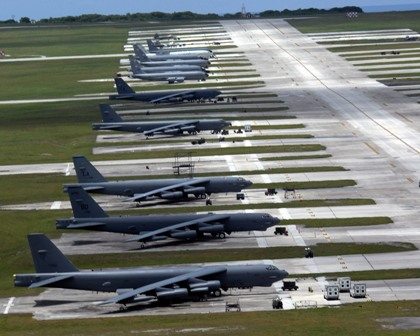The Air Force Global Strike Command predicts budget cuts triggered by sequestration will reduce B-52 flying hours by 10 percent and lead to a 20 percent reduction in overall flying hours should the law kick in on March 1, Air Force Lt. Gen. James M. Kowalski said.
Kowalski, the commander of Air Force Global Strike Command, spoke to reporters at the Defense Writers Group here today.
The command handles two parts of the nation’s nuclear triad: manned bombers and intercontinental ballistic missiles.
The general said he’s satisfied with readiness in the command today, but the fiscal problems confronting the military in the months and years ahead would, at best, cause readiness to level off or decline.
“As we look downstream at the continuing impacts of both the continuing resolution and sequestration, it’s pretty clear there’s going to be some degradation there,” he said.
The biggest and most disturbing impact for the command is on flying hours, Kowalski said.
“We are looking at up to a 20-percent reduction in flying hours,” he said.
One defense is to keep the sortie count high, Kowalski said, because the importance of flying hours is not just the time in the air for aircrews. Sorties exercise the entire process, he said, generating aircraft, fueling aircraft, arming bombs, recovering the aircraft, the maintenance of the aircraft and so on.
“All of that is exercised because that’s what we pick up and deploy to a forward operating base,” Kowalski said. “What we want to do is maintain the sortie count to maintain readiness across all of those.”
The general said he’s carefully keeping an eye on personnel issues in the command as well. There is an issue with airmen in the missile fields, he said, noting this is remote duty and there are concerns about the suicide rate among these personnel.
Reenlistment has not been a problem within Global Strike Command to date, Kowalski said. Part of the willingness to reenlist may be tied to the state of the economy, he said, and part of it is because the young airmen believe in the mission.
“All of those folks are going to continue to do a great job, but they need to know what to do and they need to know that what they are doing is important,” Kowalski said. “We have been very active in reminding them of the job’s importance.”
The force structure may change in the command, the general said, but it doesn’t change the basic mission for the command.
“This is one of the most important missions in the military — to make sure that the nuclear inventory remains safe, secure and effective,” Kowalski said.










